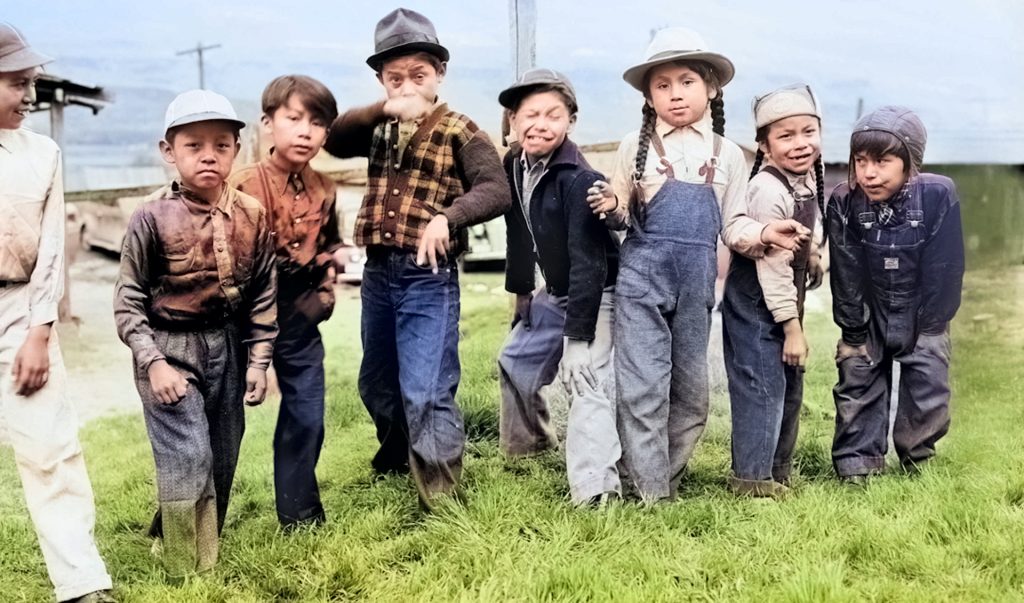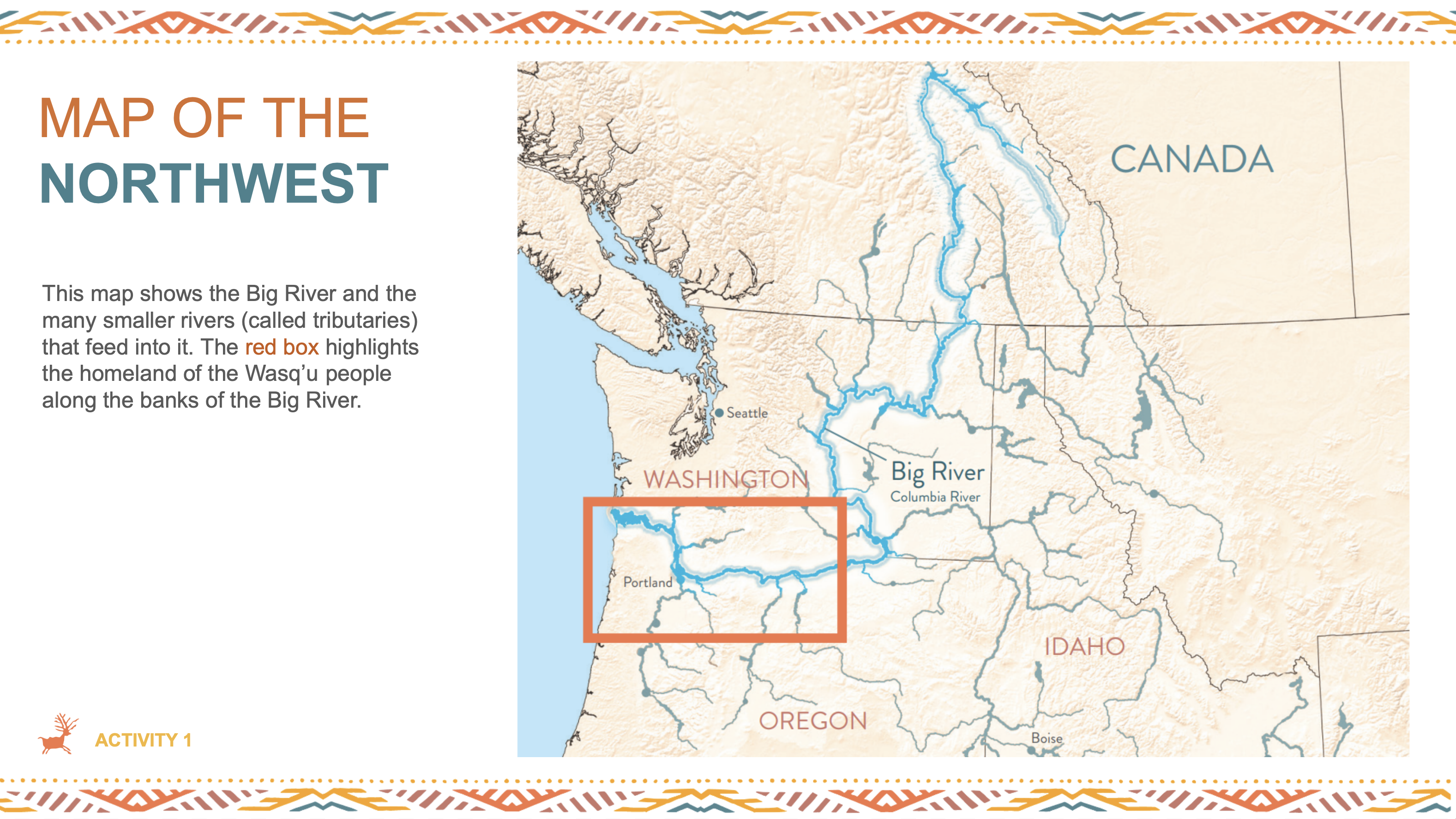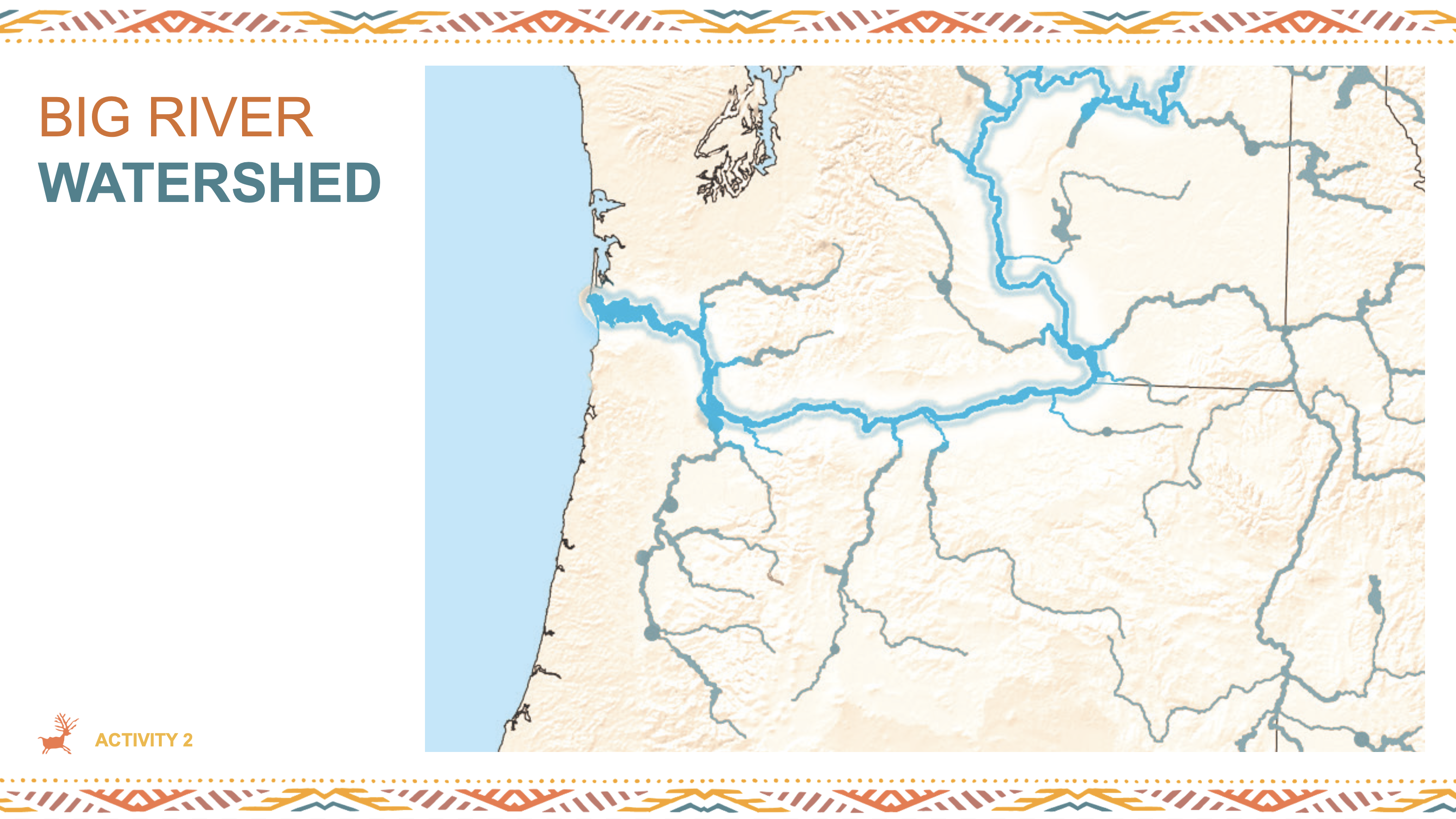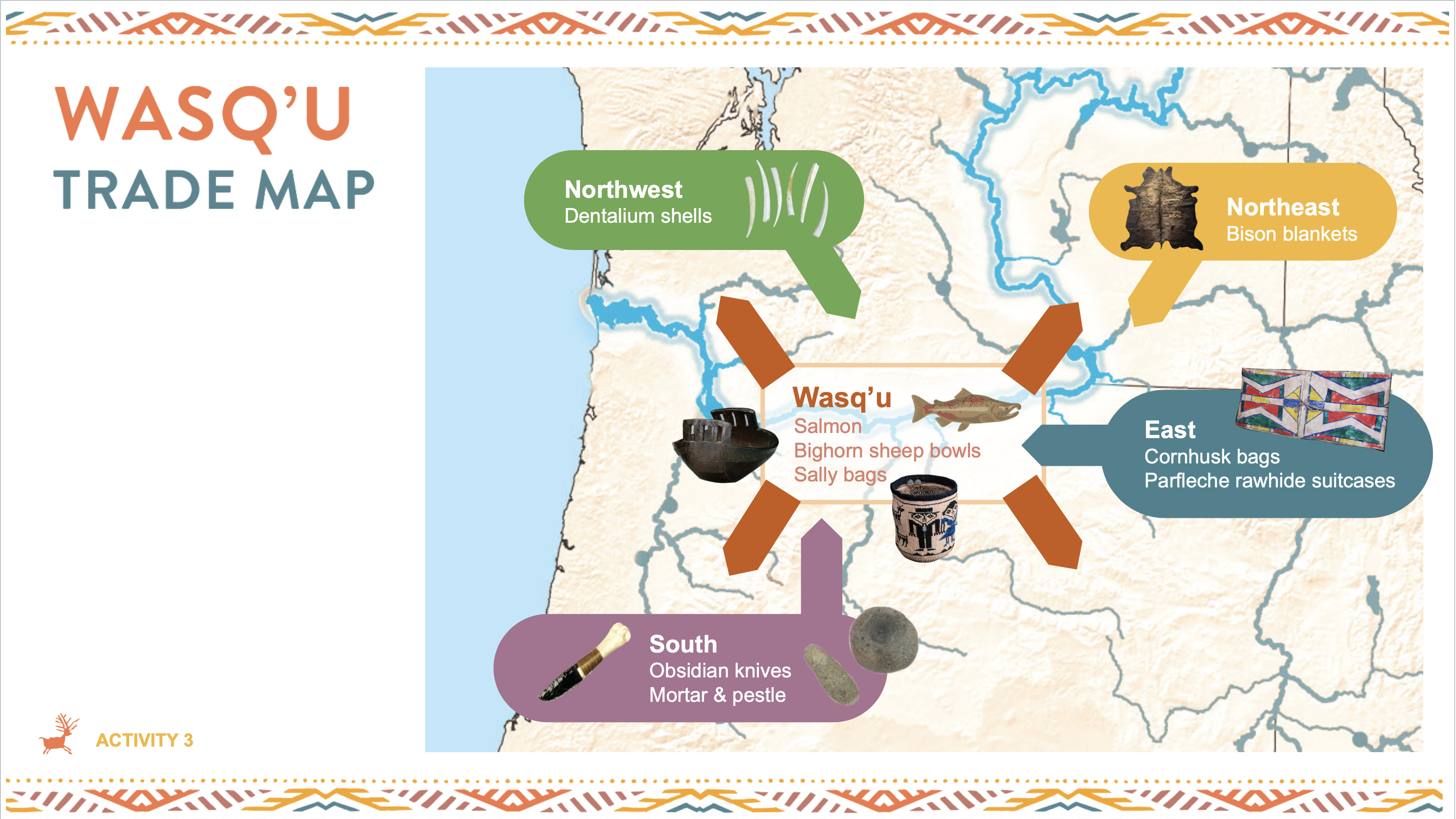

Children at Celilo Village in 1940 including (left to right) Unidentified, Dewey Canapoo, Nelson Billy, Wallace Albert, Tommy Eli, Buster George, Cecil Billy, and Russell Billy. Photograph by Everett Olmstead. Photo courtesy of Historic Photo Archive. Colorized by the High Desert Museum.
In this curriculum, students learn directly from Indigenous knowledge holders through videos, readings, images, and hands-on activities to gain a deeper understanding of the Wasq’u people and their connection to the Big River—past, present, and future.
In the first activity, students reflect on a personally meaningful place and compare it to the significance of the Big River to the Wasq’u. In the second lesson, they use maps to connect parts of the landscape to key aspects of Wasq’u culture. The third lesson immerses students in a trading simulation, helping them explore why the Wasq’u homeland along the River has been a central hub for trade and cultural exchange in the Northwest. The fourth activity highlights the ongoing efforts of the Wasq’u to care for the River, encouraging students to consider how they, too, can care for the places they live.

A root-digging stick and cornhusk bag belonging to Valerie Switzler, used for storing roots, showcases traditional Wasq’u designs on the bag. Photo by Lindsey Brunsman.



Each lesson begins with a short video featuring Wasq’u Elders and language teachers.










Please Contact Christina Cid, Director of Strategic Projects, at ccid@highdesertmuseum.org or (541) 382-4754 ext. 233 with all questions.















